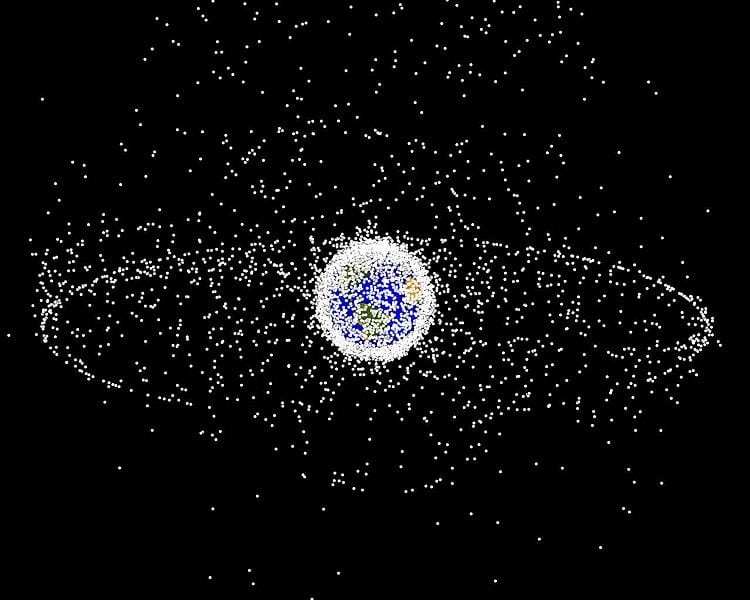Latest News

Rendering of projected orbital debris in two primary fields: the ring of objects in geosynchronous orbit (GEO) and the cloud of objects in low Earth orbit (LEO). Photo: Wikimedia Commons
SEA AIR SPACE 2023 — A Federal Communications Commission (FCC) rule last year is likely to spur demand for commercial deorbiting systems that may help declutter parts of Low-Earth Orbit (LEO), Space Development Agency (SDA) Director Derek Tournear said on Apr. 3.
Last September, the FCC adopted rules requiring operators of LEO satellites to deorbit their birds within five years of mission completion, a change from the decades-old guideline to deorbit within 25 years of mission completion.
At 600 kilometers altitude and below, satellites can rely on physics to deorbit in that 25-year window. “Most of the commercial constellations have tried to operate in that realm,” Tournear told a forum at the U.S. Navy League’s Sea-Air Space conference. “At 600 kilometers and below, which is where the [International] Space Station lives, they start to get very congested because it’s very affordable to populate that area because you don’t have to worry about deorbit. ”
“We at SDA operate above that at about 1,000 km so that means we have to think about end of life and how to do positive deorbit so that we can maintain that 25-year rule,” he said. “Now the rule is changing from 25 years to five years so that will take that 600 km off the table. More and more people will have to think about positive deorbit and end of life — which is a good thing.”
“Just a few years ago, I was of the belief that these commercial orbit servicing models didn’t really have a business case, but now I think it makes a lot of sense because I can take more risk on my satellite,” Tournear said. “I can design my satellite maybe to have single stream on propulsion — which is bad, meaning that if I lose my propulsion, then I’m stuck up there as space junk, but I don’t worry about it because if there’s a commercial company that I can then pay a few million dollars to take that satellite and deorbit it, that’s worth it to me. That’s where the commercial model, I think, takes off because now I can take more risk and make my satellites more affordable because I know there’s a trashman that can help me clean up.”
The FCC said in announcing the new deorbiting rules last September that the “vast majority” of the 4,800 satellites on orbit are commercial LEO satellites. The commission has announced an in-space servicing, assembly, and manufacturing (ISAM) effort.
The U.S. Space Force has solicited industry help on innovations for space debris mitigation and removal of objects as large as defunct satellites and as small as objects in the centimeter range.
Concepts for such removal include rendezvous and proximity operations; acquisition and capture; deorbit; movement to graveyard orbits; and elimination.
Russia’s test in November 2021 of a direct ascent anti-satellite (DA-ASAT) weapon generated more than 1,500 pieces of trackable debris and hundreds of thousands of smaller debris pieces, U.S. officials have said. A 2007 Chinese DA-ASAT test created 3,000 pieces of orbital debris larger than 10 centimeters.
This article was first published by Via Satellite sister publication Defense Daily.
Get the latest Via Satellite news!
Subscribe Now